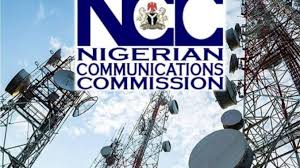The Foreign Direct Investment (FDI) inflow into the Nigerian Telecommunications industry in year 2022 dropped significantly to about USD 399,905,531.38 when compared to the USD 753,044,446.35 attracted into the industry in the preceding year.
Similarly, domestic investments in the industry also dipped by 36.1% year-on-year in 2022.
However, despite the substantial decline in both foreign and domestic investments in the rapidly growing sector, its contribution to the Nigerian Gross Domestic Product (GDP) surged from 12.61% in the fourth quarter of 2021 to 13.55% in the corresponding quarter of 2022.
The latest data from the ‘2022 Subscriber/Network Data Annual Report’ on the industry published by by the Policy Competition and Economic Analysis Department of the Nigerian Communications Commission (NCC), indicated that it attracted local investment of about N785.7 billion and generated N3,856,026,156,380.29 as revenue in the year under review.
According to the industry regulatory commission, telecom operators reported a total CAPEX of N718,350,570,000 in 2022 as investment compared to the N1,124,117,000,000 invested in year 2021, representing a decline of 36.1% within the period.
Similarly, the operators’ total operating costs rose from N1,658,235,000,000 in year 2021 to N1,996,659,000,000 at the end of year 2022 while they recorded an approximate total revenue of N3,329,241,000,000 as of December 2022 compared to N2,774,128,000,000 they raked in year 2021, indicating an increase of 20.01% in total revenue from the Mobile Network Operators (MNOs).
A further analysis of the report showed that there was a huge growth in telecom infrastructure deployment recorded in 2022 with a total of 34,862 towers deployed by the telecom operators nationwide
Similarly, the MNOs also reported a total number of 127,294 base stations and microwave coverage of 289,270.48km, with a total number of 125 Gateways and Fiber Optics Deployment of 96,198 km (terrestrial fiber & submarine) cable in 2022
According to the report, the operators also hugely invested in rollout by increasing the numbers to 127,294 in 2022 from 114,412 recorded in December 2021, representing an increase of 11.25% from the previous year.
On land fiber deployment, the report indicated an increase from 49,367.20km in 2022 compared to 47,128.7km in the preceding year with MTN leading the deployment by 14,612km; GLO – 13,813km; AIRTEL-16,112.2km; EMTS – 4,650km and NTEL – 180km.
This is even as the report reflected that number of subscribers by Internet Speed dropped as of December 2022 as 512 users fell in the 256kbs– 1Mbps category; 2,502 users subscribed to speeds between 2mbps-10mbps; 14,528 users between 10Mbps. However, the 4G was not in the category reported by service providers in the fixed wired category.
The commission disclosed in the report that the total number of Outgoing Fixed to Mobile traffic was 166,260,848 as of December, 2022 while the total number of Incoming Fixed to Mobile traffic as of December 2021 totalled 191,599,581.
A further analysis of the the Fixed to the Mobile traffic trend for the fixed market segment showed that a considerable percentage of this traffic was generated on the MTN’s network for outgoing traffic and 21st Century network for Incoming traffic.






